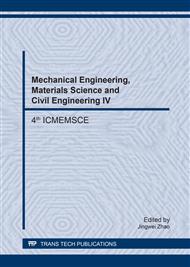p.335
p.340
p.345
p.350
p.354
p.363
p.369
p.375
p.380
Preparation and Mechanical Properties of Diamond Honing Oilstone
Abstract:
The diamond honing oilstone was fabricated by hot-pressing at 550–650 °C and 25 MPa pressure for 4 min, using Cu–Sn based alloys as binder metal and uncoated or W-coated diamond grains as abrasive material. The microstructures and phase compositions of the honing oilstone were examined and analyzed by SEM and XRD. Effects of the oilstone composition, sintering temperature and volume fraction of diamond grains on the mechanical properties of diamond honing oilstone were investigated. The experimental results show that the interfaces between the diamond grains and metal matrices of all the oilstone samples are smooth and no defects are observed in the metal matrices. The bending strength and rockwell hardness of the honing stones increase with the sintering temperature increasing from 550 °C to 650 °C, and the bending strength decrease with the increase of diamond grains faction. The minimum grinding ratio is obtained as the diamond was W-coated, which can be attributed to the improved interfacial bonding derived from the W coating.
Info:
Periodical:
Pages:
354-359
Citation:
Online since:
March 2017
Authors:
Price:
Сopyright:
© 2017 Trans Tech Publications Ltd. All Rights Reserved
Share:
Citation:


